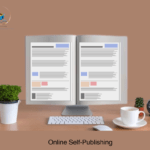According to the definition given by the American Library Association, “book criticism” refers to the evaluation of a literary work, which is usually published in magazines and newspapers. According to Helen Haynes, “book criticism refers to the critical analysis of that work. “In fact, book criticism refers to the discussion of the content of the book, the review of the external aspects of the book (binding, printing, paper, etc.), the evaluation of the author, and the comparative discussion with other books on that subject. With the help of book criticism, all aspects of a book are discussed very briefly and reliably, with the help of which one can learn about a book in a short time. With the help of library criticism, one can get an idea about the book.
Librarian’s Book Criticism Method:
Every librarian must acquire the skill of book criticism. This requires
1. Speed reading – practice;
2. Gaining ideas and knowledge about various subjects;
3. Gaining the ability and experience to evaluate a subject by considering all aspects;
4. Overall, reading quickly, noting how the author has presented the main subject in a book, and acquiring a collection by maintaining a balance of all subjects.
To accomplish the above tasks, a book reviewer takes the following steps:
First – To examine the book jacket or cover to get a basic idea about the book. Although these are promotional and one-sided descriptions of the book’s qualities, they still give an idea of the subject. Sometimes the “Foreword” of the book is very helpful, which is written about ordinary people.
Second – To examine the table of contents. This shows how the subject is arranged. It indicates the structure and plan of the book’s subject, so that what the author wants to say in the funeral.
Third – To read the preface, in addition to giving a brief idea about the author and other subjects, there is a brief description of what kind of help and support the author received in writing the book. In addition, the appendix provides necessary information.
Fourth – To criticize the different chapters of the book – so that a clear idea of the book is clearly obtained. In addition, the first chapter and other chapters are glanced at so that it is quickly understood which part of the subject has been given priority. Many books have a summary of each chapter. These are very helpful.
Fifth – Writing techniques, format, structure are tested – this gives an idea about the presentation of the topic.
Sixth – After passing the above stages, the librarian creates a summary of the book. In order to identify the main aspects of the subject – to ensure its possible use. Then the book is compared with other similar books. The final decision to purchase the book is considered. In order to see whether the book is a new addition to the subject or is traditional. These points are basically accepted in the final topic after reviewing the book’s theme.
These can be presented as explanatory notes. Or they are written as book notes. The above methods are considered as tools for writing book criticism. In fact, these are ‘routine’ tasks for the librarian or book critic. Once you get used to this task, it can be done quickly.

Need for book criticism:
1. It gives librarians a quick and impartial idea. It is not possible for librarians to read all the published books and express their opinions. Book criticism helps them.
2. Book criticism helps in making a quality collection and saves the librarian time.
3. It reliably highlights the reader’s discussion of new books – it makes the reader interested in that subject.
4. Book criticism analyzes the subject of a book, presents facts, discusses it in comparison with other books, reviews the special features of the author’s writing and in a word, presents the good and bad sides of the book accurately.
5. It provides advance information about a book. One can get an idea about the book before buying it. That is, book criticism is published in many magazines before the book is published. For example: “Book World”, “Library Journal”, Book Seller “Publisher Weekly etc.
6. It is considered a reliable helper for selecting books in the library.
7. Good criticism presents the significant aspects of the book impartially.
8. Through book reviews, one can learn about quality recent publications.
9. Book criticism is a popular means of learning about books, as its current widespread circulation and popularity proves.
Librarian’s Annotation: The Role of Book Criticism –
Annotation: Although explanatory annotation is not necessary for book selection, this annotation helps in choosing or nominating books. In addition, information about the selected book can be presented to the reader through it. Annotation is actually a short note or comment about the book.
Definition:
Annotation briefly presents various features of a book in a critical or descriptive manner.
There are two types of Annotation:
1. Library Report
2. Reader’s Report
1. Library Report: Librarians do not prepare short reports in the light of various criticisms. It helps in book selection. Librarian’s report can be called a short opinion about the published book. Such reports about books are prepared for the needs of the librarian. It contains a brief discussion about the book. This report is prepared very carefully. It is limited to 50 to 100 words. Extra words are excluded. To quickly get an idea about the main library book, it briefly highlights the content of the book, the author and the characteristics and significance of the book. It helps to determine whether the book will meet the needs of the library reader. To prepare it, appropriate use of words and effective presentation in moderate words are required. Even though the use of words is limited, its strong presentation helps the librarian. Although it is a brief description of the book, there are arguments for and against whether the book should be added to the library. Annotation is prepared impartially and without bias so that the librarian can make the right decision. It is called Book Note.
2. Reader’s Report: The librarian prepares it for the benefit of the reader from the library collection. It is prepared by the librarian. It facilitates the selection of books for the reader. It is distributed among the readers to give the reader an idea about the book and attract the attention of the book. This report is completed in one or two sentences very briefly. Its main purpose is to promote the significant aspects of the book and attract the reader.
In conclusion, book criticism serves as an essential tool for both librarians and readers, providing a concise yet reliable evaluation of a book’s quality, content, and significance. It not only aids in effective book selection and collection development but also fosters informed and enthusiastic reading among users.



